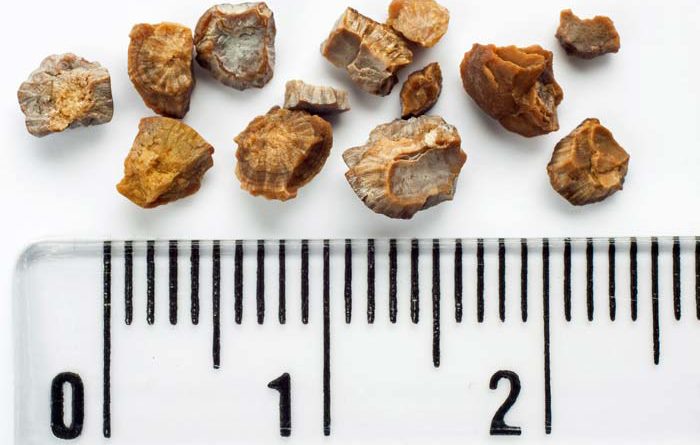Lessons learned from an excruciating experience with a kidney stone
How many hospital ER waiting rooms have carpeted floors?
Soaked in sweat, that was the only coherent thought I could muster while rolling around in excruciating pain in between bouts of vomiting and nausea during a late-July battle with an 8-millimeter kidney stone at the Evangelical Community Hospital in Lewisburg, Pa.
How could such a tiny stone cause such big problems? It had wedged itself into my left ureter, blocking urine and a festering infection into the kidney and causing the most unbelievable, unquenchable pain I’ve ever experienced.
No position helped — standing, sitting, curled up in a fetal position, flailing around like a fish out of water — there was no relief until doctors injected Toradol into my IV two hours later.
The event turned into a two-day hospital stay where a stent was inserted to open up the ureter while antibiotics fought the infection in my kidney. A few weeks later, Dr. Darshan Bhangdia inserted a scope and blasted the stone in my kidney with a laser in what was basically a Star Wars scene in my urinary tract.
A week later, the stent was removed and things have returned to normal.
The ordeal left a lasting impression and taught me a few important things.
First, all hospital ERs should have carpet like the one at Evangelical. When you are thrashing around in unbearable, it-feels-like-I’m-about-to-die pain, even the tiniest of creature comforts can still be appreciated. Also, those who painstakingly clean those carpets after messy episodes like mine should be given a raise or a medal — probably both.
I’ve also been overwhelmed in how common kidney stone situations can be. Since my “adventure,” countless friends, relatives and acquaintances have come forward and shared their experiences. I’ve appreciated their stories and acceptance into a club that no one really wants to join, but can be reassuring once you’re in.
Doctors estimate that one in six men and one in 10 woman will experience a kidney stone before the age of 70 — a drastic increase since the 1980s when about four percent of all people got them.
Thankfully, most kidney stone situations aren’t as critical as what I went through — but the scary statistic for me is that those who’ve experienced a stone are 50 percent more likely to develop another vs. the general public.
Which leads to the final lesson learned — prevention has become a priority.
Doctors such as Geisinger nephrologist Dr. Gurmukteshwar Singh are investigating ways to prevent future stones by trying to answer the “why” behind each stone as a way to develop the “how” of avoiding them. He, and his colleagues, are unsung heroes for those in the not-so-exclusive club of stone growers.
Diet changes are also important. I’ve cut out dark sodas and teas. I’ve tried to reduce sodium intake. Coffee — for those who drink it — can also increase stone-creating risk. Improving intake of potassium, magnesium and citric acid can also help.
However, perhaps the most important aspect of avoiding kidney stones is to stay well-hydrated.
“I can’t tell you how much to drink, but what is more important is how much urine you pass,” said Singh. “A person should pass about two liters of urine a day — so basically a soda bottle overflowing.”
I’m hoping this formula holds true for me (and maybe you, too) moving forward: Drink more water + tweak diet = no more ER carpet diving.

